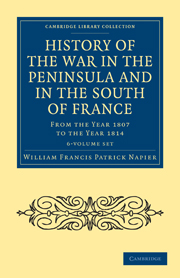 I went to Grasmere at the weekend, in the full knowledge that it would rain and rain and rain, and it did. My last visit to the Lakes must have been about 25 years ago, but then I was too engrossed in preventing small children from falling down screes or off crags or into becks to take in much culture. However, as a child myself, I spent the summer holidays there for over ten years running, and I was very interested to see what (peering through the drizzle) I could remember.
I went to Grasmere at the weekend, in the full knowledge that it would rain and rain and rain, and it did. My last visit to the Lakes must have been about 25 years ago, but then I was too engrossed in preventing small children from falling down screes or off crags or into becks to take in much culture. However, as a child myself, I spent the summer holidays there for over ten years running, and I was very interested to see what (peering through the drizzle) I could remember.
Ambleside and Grasmere are both (to my eye) pretty unchanged in terms of new development, but they have it in common with Venice (as well as the ‘gondola’ on the lake) that both villages seem to have become tourism monocultures, with dozens more houses (especially the big late-Victorian places with grounds and a lake view) becoming hotels, inns, ‘residences’ or whatever: where do the natives now live? The Ambleside pottery, of whose ceramic output I have a small collection, appears to have become the Giggling Goose café… sic transit ceramica mundi.
But the reason I was up north was connected with William Wordsworth and Dove Cottage. I really can’t remember if I visited the cottage as a child, and certainly the splendid museum buildings post-date my visits. Walking round, I was very struck by how dark the house was: low windows let into the thick walls, with only the fire for illumination unless candles were lit.
I was reminded of Miss Matty in Cranford, knitting for two or three hours in the dusk, and not ordering candles, which the narrator needed for fine sewing, before tea; then the anxiety of making sure that the one candle of the pair which was lit at any one time should be kept at approximately the same length as the other, so that a caller (who never in fact came) might suppose that they always lit two…
Dorothy Wordsworth apparently did her sewing in the garden when possible: this was probably because of her intense love of being outdoors, but it was also very practical in terms of light. I had not known until my visit that her mother died when she was six, and that subsequently she was shared out among relatives all over the country, not being reunited with her beloved brothers until she was she was in her twenties, and not returning to the Lakes until 1799.
She papered the tiny upstairs spare room of the cottage with The Times. Advertisements in 1800 included an émigré French lady, seeking work as a housekeeper, who could teach French to two or three young ladies as well as housework, sewing, etc. A grateful patient provided a testimonial to ‘anti-nervous’ tea, which could be obtained from two outlets in London. An enormous estate at Great Bardfield in Essex (where I have relatives) was up for auction… I could have stayed for hours.
The garden, rising steeply behind the house, so that access is through a door on the first floor landing, is delightful, even in the rain: local native plants (including the correct daffodils, Narcissus pseudonarcissus, saxifrage, dog’s-tooth violets) led up to an arbour which would have had a wonderful view of the mere if it wasn’t for the late Victorian house (now the Daffodil Hotel) which had been dropped between.
In the front garden is a vegetable patch, the descendant of the one which William and Dorothy, and whatever friends were staying, hoed and weeded. The Coleridges and Southeys were nearby, later De Quincey came and went. Dorothy had met Catherine, later the wife of Thomas Clarkson, the abolitionist, at school, and remained her lifelong friend. Henry Crabbe Robinson noted meetings with her and William in his diaries.
Far too much was left undone and unseen on this brief visit, though I did have the enormous privilege of seeing some of the manuscript letters and notebooks kept in a fireproof, climate-controlled room at the Museum. But it’s impelled me to get back and read both the works and the works about. I bought Dorothy’s Alfoxden and Grasmere journals in the shop, and I have been checking back on what CLC can provide.
We have ‘done’ Wordsworth himself, Southey, Coleridge and De Quincey in the ‘English Men of Letters’ series. St John’s College, Cambridge, published a short book on Wordsworth at Cambridge for the centenary of his death. And of course Wordsworth contributed to the guide to the Lakes of which we have published the 1853 printing, which also containing geological information by Adam Sedgwick. This summer we will be bringing out the two-volume life of Wordsworth by his designated biographer, his nephew Christopher, later bishop of Lincoln. It is of course hagiographic, but is based on access to the poet’s papers and on long conversations with him and other members of his family.
The other famous literary inhabitant of the area was Harriet Martineau, and we spotted a plaque to her: she did not move into ‘The Knoll’ at Ambleside until 1845, but was apparently well know to the Wordsworths and their circle. She too published a travel guide, to Windermere.
And there were daffodils everywhere (not all of them authentic, but nevertheless spectacular), and Herdwick sheep, with bony, enchanting new-born lambs, wet but undismayed – and they, unlike me, alas, will still be there when the rain stops.
Caroline



Pingback: Your Chelsea Correspondent | Cambridge Library Collection Blog
Pingback: The Young Wordsworth | Cambridge Library Collection Blog
Pingback: Peace and Freedom | Cambridge Library Collection Blog
Pingback: The Small Ads | Professor Hedgehog's Journal